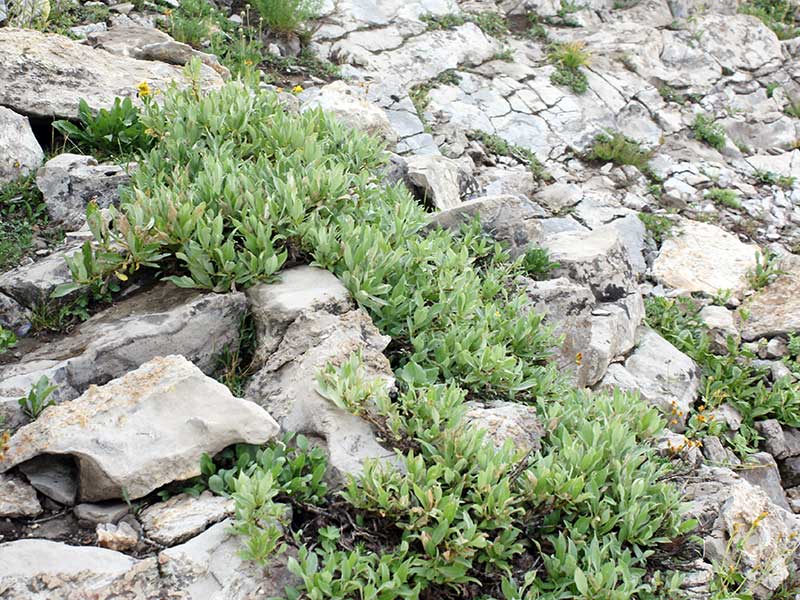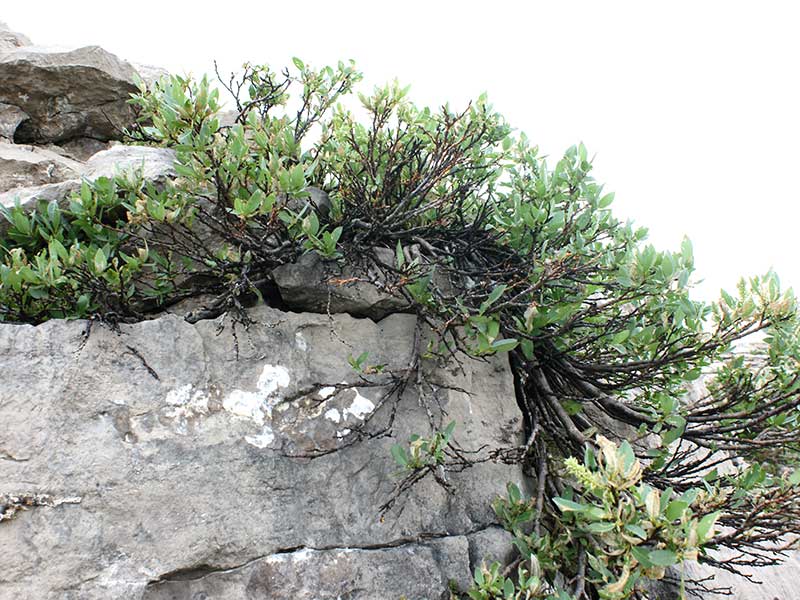Salix glauca / grayleaf willow
- very low-growing shrub at high altitude (alpine/subalpine)
- rounded to lance-shaped leaves; smooth below
- large-ish catkin inflorescences
In its primary range, grayleaf willow is a shrub of the 3-4 feet range, but on good sites can grow as high as 20 feet. Where it grows in the Valley, I’m not sure. But the photos included here are from the top of the Targhee ski hill where it is definitely stunted… semi-prostrate. The bark is gray (or grey) and smooth, especially when the plant is tall enough to see that. On larger individuals, it gets to be rough and furrowed.
Originally, I had called this plant the arctic willow. Probably because the semi-prostrate plants are difficult to distinguish from that species as they grow in exposed, alpine and subalpine habitats with rocky, well-drained soils. However, for various reasons, it seems that S. arctica is no longer consider to live here.
Grayleaf willow leaves have grayish green upper surfaces and are hairless below (ergo, S. glauca). They are smooth, and even veined, meaning there is nothing about that pattern that stands out particularly. The leaf shape is generally lance shaped (long and narrow), with short petioles.
Like the rest of the willows, grayleaf willow is dioecious, i.e. having male and female flowers on separate plants. The inflorescence is a catkin, a spikey thing with flowers lacking petals or sepals. They appear with, or shortly after, the leaves. This favors wind pollination although a number of insects also visit the willows in general.
Although it can reproduce asexually after fire or cutting, for example, its primary means of reproduction is sexual with seed production starting at 2 to 10 years of age. But unlike other willows, the seeds of grayleaf will remain on the plant throughout the summer and are only released in the fall. They are easily wind or water dispersed because of their cottony/downy covering. Also unlike other willows, the seeds don’t germinate immediate upon hitting the soil, but overwinter under the snow and germinate in the spring.
Despite the short stature of the grayleaf willow, it is long-lived, so short plants can be very old (more than a couple hundred years). It is found in alpine meadows, wet and dry areas, and amongst rocks at the tops of mountains.
Many thanks to Margaret Krichbaum (margaret_eaglecap) at iNaturalist.org for setting me straight on what species this (probably) is.
| Color | |
|---|---|
| Family | |
| Blossom size | |
| Inflorescence size | |
| Inflorescence type | |
| When? | |
| Where? |


